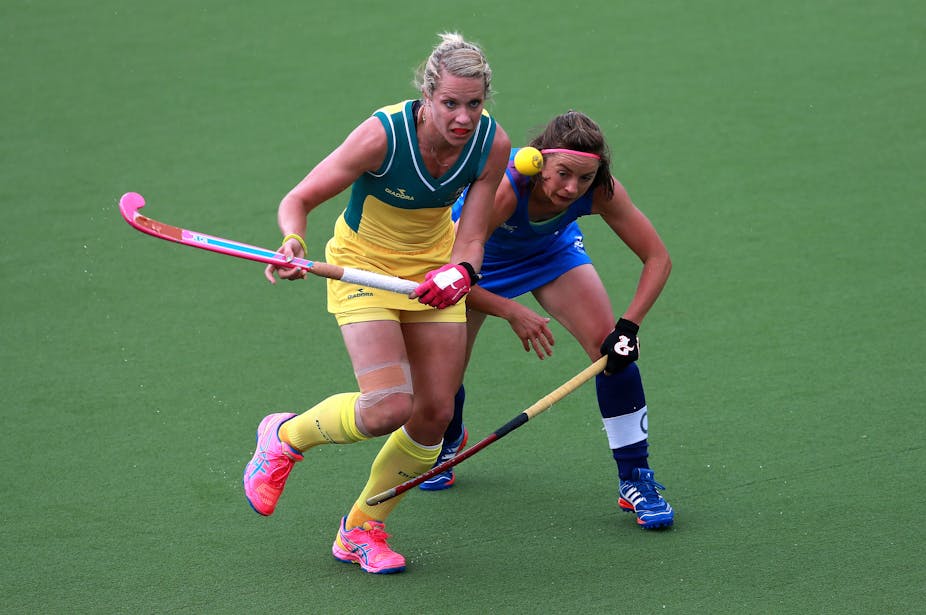With the Commonwealth Games underway, it’s time to take a look at a sport with a long and successful history in Australia – field hockey.
Both the Australian men and women’s teams have gone to Glasgow as gold medal favourites. The Kookaburras are number one in the world, and their female counterparts the Hockeyroos aren’t far behind, sitting at number two.
So what is it that makes these Australian teams so successful?
Tricia Heberle, former Hockeyroo, women’s England coach and now high performance director for Hockey Australia, highlights three key areas that have contributed to this success: high standards, willingness to embrace technology and looking for talent further afield.
1. Aim high
Australian hockey culture positions national representation as the pinnacle of the sport, reflected in players’ attitudes and elite level funding priorities.
This is in contrast to the European system where the “country versus club” issue is a battle, and in spite of the much smaller distances to travel, contact hours with national teams are very limited.
Strong talent development pathways, quality of people in administration and leadership within Australian hockey and the “never happy” attitude are crucial to ongoing success.

2. Embrace new technology
Developed by Don Prior (an international hockey umpire), the worldwide performance analysis system Sportscode was first used by Australian hockey teams to conduct the first performance analyses that are commonplace today in elite sports. This innovation and attention to detail is also reflected in the approach to trends in coaching.
A few years ago there was debate on goalkeepers’ foot position to save drag flicks, with the trend towards a wider stance being evident.
Rather than leave this to chance, John Mowat, current game education manager at Hockey Australia, commissioned a study at Victoria University/ISEAL to determine if a wider stance was, in fact, optimal.
And, it turns out, it is – movement times to save shots to the four corners of the goal are shorter with a wide stance.
Currently there are studies examining optimal technique in hitting, flicking and tomahawk execution (see video below) and how to develop these skills in juniors as well as examining the optimal field-size-to-player-number ratio for small-sided games in juniors.
3. Look outside cities
It is interesting to note that there is a strong “country” effect in both teams. While approximately 22% of Australians live in smaller towns fewer than 100,000 people, the women’s team boasts 10 players from this group (63% of the team) while the men’s team has eight (50%).

This over-representation of country-born-and-bred players relative to the general population has been found in some other sports with factors such as more “free play”.
This may be due to earlier opportunities to play senior sport or simply watching their parents play from a young age.
We do, though, need to continue to find better ways to develop players, identify talent earlier, and manage changes in society which impinge on activity levels of children and adolescents, resulting in a different injury and athletic profile than in previous years.
Further, the provision of international games for junior players is a difficult issue compared to European nations, who can play two or three international teams in close proximity.
Ex-Kookaburra David Wansbrough summed up the state of Australian hockey best when he told us:
[…] at the end of the day hockey is like a lot of other Aussie sports […]. We play and compete hard. We are prepared to work hard. We have some smart people across the sport. We are prepared to innovate.

